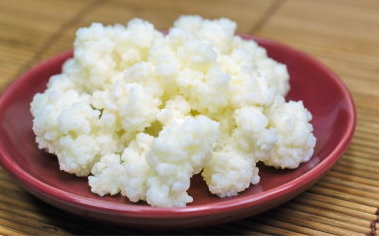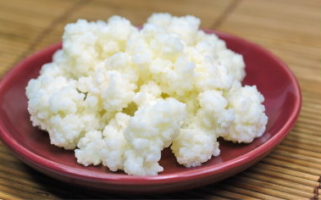Kefir Grains, what are they?
Kefir grains can be defined as small bacteria, kefiran and yeast communities which exist in gummy, solid g
When you have the live kefir culture, you can enjoy your kefir for a long time and any time you want to. The grains are separated (Kefir Maker) from the beverage and can be stored for later use. There is however a great need to know how to buy the best live kefir culture and how to store or preserve them well so you can enjoy your drink for a long time.
Buying kefir grains
Before buying live kefir grains, know that you have an option of choosing powdered cultures. Powdered cultures are easier to store because they have dormant bacteria and yeast but they expire and you will not get the full probiotic benefit due to the lack of bacteria present. Live fresh grains can live for a long time when well preserved and you won’t have to buy new cultures ever again.
Freeze-dried Kefir Culture is a perfect way to purchase since it is packaged air tight, easy to ship and store in cool temperatures for long periods of time. After “rejuvenating” them in your preferred liquid (cows, almond, coconut milk or even sugar water) they will return to Life Kefir Grains with the full spectrum of bacteria and yeast, to ferment a first class probiotic for years to come.
Buy from reputable commercial sources. Kefir Culture Natural is one of the best companies you can choose, they produce top quality kefir grains since 1996 and have been educating the public on the benefits of kefir and fermented food products ever since.
Next should be to ensure that you manage the grains properly and below are helpful points on preserving your grains.
Preserving kefir grains
For short term storage of the live grains, select a clean glass jar and wash using warm water to rid it off acidic residues and then dry the jar. Place your grains in the jar but don’t fill it to the top and then pour enough milk before covering completely. If possible screw the lid to the jar then place it in your fridge at 4 degree C for up to four weeks. If you wish to store the grains longer, change the milk every four weeks.
For long term storage, boil water in a stockpot after which you allow it to cool. Place a colander in your sink and place the kefir culture in it, then pour your cool water over them. Place a clean terry cloth towel over your counter then place the kefir grains on top and dry before placing them in a clean glass jar and put it in your freezer.
Rinsing of live kefir grains is however not that advisable but if you must ensure that you do not store them for more than a month because the nutritional value is greatly reduced. You can get more preservation advice from kefir forums that have hobbyists or from a knowledgeable supplier.
As you can see Kefir Culture is easy to store and with a little care can last for many years. As long as you are careful not to use hot liquids and you don’t over wash them, they will serve you and your family by supplying a first class probiotic on a daily basis to continually enhancing your health.


